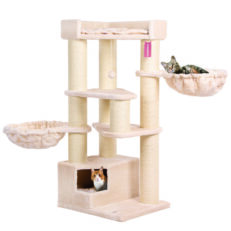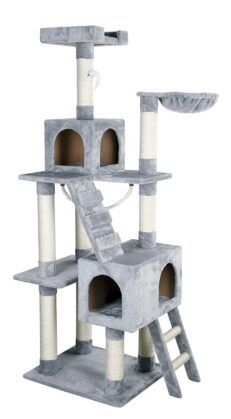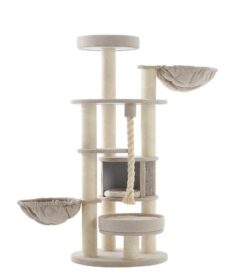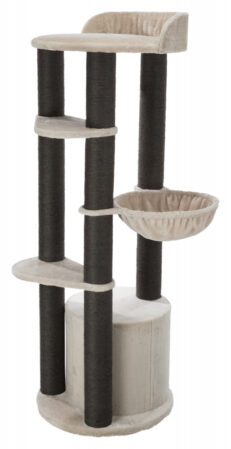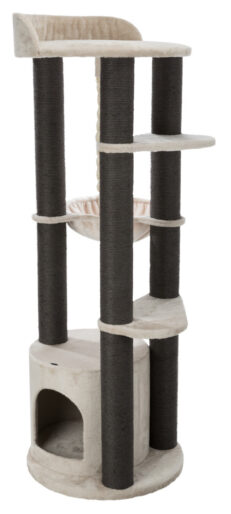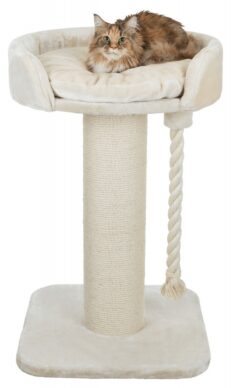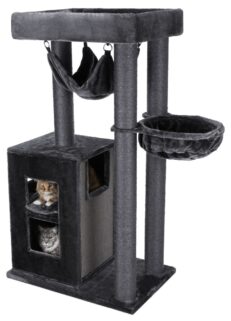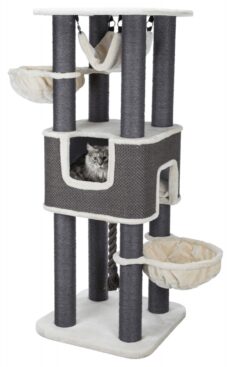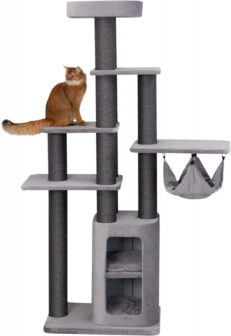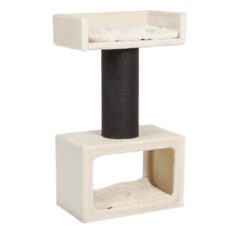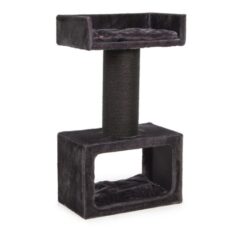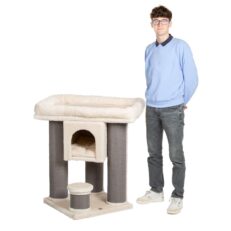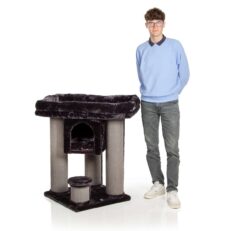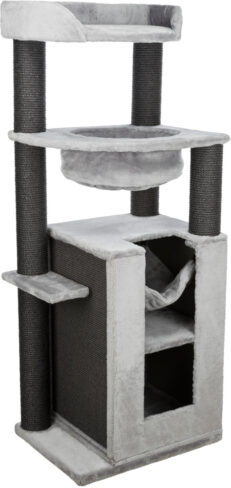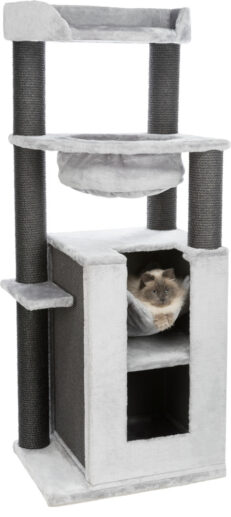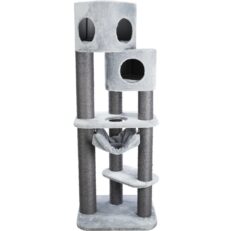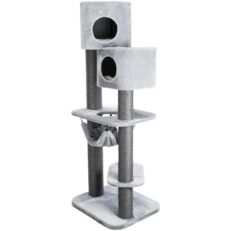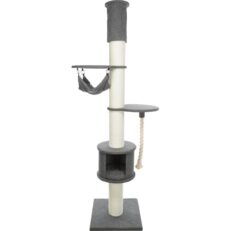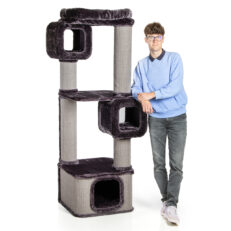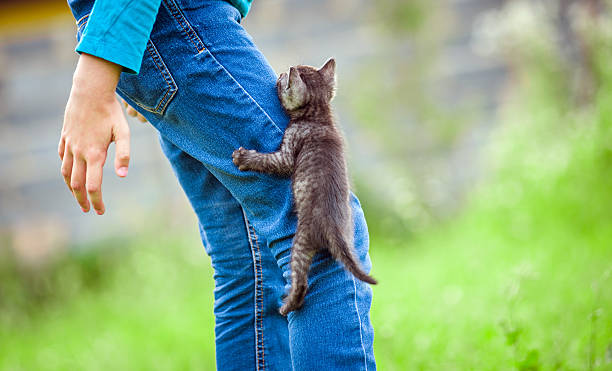
When you bring a kitten into your home, you’re not just getting a pet—you’re inviting a bundle of energy and curiosity. Kittens are naturally inclined to climb and explore, driven by instincts deeply embedded in their DNA. This behavior harks back to their wild ancestors, for whom climbing was a survival skill, essential for hunting and evading predators. As kittens grow, their developmental stages are marked by increasing physical agility and curiosity. Climbing offers them a way to satisfy their natural instincts, enhance their coordination, and explore their surroundings from different perspectives. Understanding this behavior is key to appreciating your kitten’s needs and ensuring a harmonious coexistence.
Common Reasons for Climbing
Kittens climb for various reasons, each equally important in their development and interaction with their environment. One of the primary reasons is seeking attention. Just like human toddlers, kittens crave interaction and stimulation. Climbing onto humans can be a way for them to initiate play or to seek comfort and affection. Additionally, their inherent playfulness drives them to perceive everything as a potential toy, including their human companions. Climbing can be a playful act, a way to engage with their environment and the people in it. Another reason is their natural attraction to heights. High vantage points provide kittens with a sense of security and dominance, allowing them to survey their surroundings and feel in control.
Case Study
Consider the story of Emma and her kitten, Leo. When Leo was brought home, Emma noticed his penchant for climbing—curtains, furniture, and even her legs. Initially, she found this behavior endearing but soon realized it could lead to potential hazards, both for Leo and her belongings. Emma observed that Leo’s climbing intensified when he was left alone for long periods or when he seemed bored. She began engaging Leo in regular play sessions, using cat toys that simulated hunting activities, and set up a cat tree for him to climb. These changes not only reduced unwanted climbing but also deepened the bond between Emma and Leo. This case highlights the importance of understanding the underlying reasons behind a kitten’s climbing behavior and addressing them in a way that fulfills their instinctual needs.
Managing and Redirecting Climbing Behavior
Managing and redirecting climbing behavior in kittens is crucial for their safety and your peace of mind. Kittens are naturally curious and love to explore their environment, often by climbing. However, not all climbing is safe or appropriate. This chapter will provide you with effective strategies to manage and redirect this behavior.
Setting Boundaries
The first step in managing your kitten’s climbing behavior is to set clear boundaries. Determine which areas are off-limits, like kitchen counters or bookshelves, and consistently enforce these rules. When your kitten attempts to climb in these areas, gently but firmly remove them while saying “no.” It’s important to do this every time they attempt to climb in a prohibited area to reinforce the message. Also, make sure to remove any items that may attract your kitten to these off-limits areas.
Alternative Climbing Options
Providing alternative climbing options is key to redirecting your kitten’s climbing behavior. Invest in cat trees, shelves, and other cat-friendly structures that are safe and appealing for climbing. Position these alternatives near areas where your kitten is inclined to climb inappropriately. This gives them a suitable outlet for their climbing instincts. Ensure that these structures are stable and secure to prevent any accidents.
Positive Reinforcement
Positive reinforcement is an effective tool in encouraging desired behavior. When your kitten uses the cat tree or other appropriate climbing structures, reward them with treats and praise. This positive association will encourage them to repeat the behavior. Additionally, engaging in playtime on these structures can reinforce their attractiveness. Remember, consistency is key. Always reward good behavior and avoid punishing your kitten, as this can lead to fear and mistrust.
In conclusion, managing and redirecting your kitten’s climbing behavior requires patience, consistency, and understanding. By setting clear boundaries, providing safe climbing alternatives, and using positive reinforcement, you can ensure your kitten enjoys their climbing adventures safely and appropriately. Remember, every kitten is unique, so be prepared to adapt these strategies to suit your furry friend’s individual needs and personality.
Playtime and Exercise in Kitten Development
Playtime is not just a leisure activity for kittens; it’s an essential part of their development. This chapter delves into the role of play in shaping a kitten’s behavior and physical growth, offers insights into interactive play sessions that don’t encourage climbing on people, and provides creative ideas for DIY toys and games.
The Role of Play in Kitten Development
Play is integral to a kitten’s development. It contributes significantly to their physical strength, coordination, and agility. Through playful interactions, kittens learn about their environment, develop hunting skills, and practice social behaviors. Play also fosters cognitive development, helping kittens understand cause and effect and solving problems. Additionally, regular play helps prevent obesity and associated health issues, keeping your kitten physically fit and mentally sharp.
Interactive Play Sessions
Engaging kittens in interactive play sessions is crucial. These sessions should be designed to stimulate their minds and bodies without encouraging them to climb on people. Wand toys, laser pointers, and balls are excellent for such interactions. These toys can mimic the movements of prey, stimulating your kitten’s natural hunting instincts in a controlled environment. It’s important to supervise playtime with small or string-like objects to prevent accidental ingestion. Remember to let your kitten ‘catch’ the toy occasionally to avoid frustration and maintain interest.
DIY Toys and Games
Creating DIY toys and games can be both cost-effective and highly engaging for your kitten. Simple items like paper rolls, boxes, and crinkled paper can provide hours of entertainment. You can create a puzzle feeder using a small box with holes, challenging your kitten to reach treats inside. Another idea is to tie a feather or a small toy to a string and attach it to a stick, creating a homemade wand toy. Always ensure that homemade toys are safe, with no small parts that could be swallowed or sharp edges.
Nutritional Needs and Feeding Habits of Kittens
When it comes to raising a healthy and happy kitten, understanding their nutritional needs and feeding habits is as crucial as understanding their behavior. Kittens grow rapidly, requiring a balanced diet that is rich in proteins, vitamins, and minerals. This diet is not just about filling their stomachs; it’s about providing the necessary nutrients for strong bones, good vision, and a healthy coat. The quality of food you provide to your kitten directly impacts their overall health and development.
In the early stages of a kitten’s life, feeding schedules and the type of food you choose are vital. Kittens typically need to be fed more frequently than adult cats, owing to their smaller stomachs and higher energy requirements. It’s recommended to feed them high-quality kitten food, which is specifically formulated to support their growth. These foods are denser in key nutrients compared to adult cat food and are essential for proper development. The timing of feedings also plays a role. Regularly spaced meals help prevent hunger-related issues, which can sometimes manifest in behaviors like excessive climbing or attention-seeking.
As you navigate through the plethora of available information, it’s important to be aware of common myths surrounding kitten nutrition. For instance, it’s a misconception that feeding a kitten more will curb its instinctual behaviors like climbing or exploration. While hunger can exacerbate such behaviors, overfeeding is not a solution and can lead to health problems. Another myth is that kittens can thrive on an adult cat’s diet. However, this can deprive them of essential nutrients needed during their growth phase. It’s always best to consult with a veterinarian to determine the most suitable diet plan for your kitten.
Understanding the nutritional needs and feeding habits of your kitten is a step towards ensuring their well-being. A balanced diet, appropriate feeding schedule, and debunking common myths are key to this understanding. By providing your kitten with the right nutrition, you’re setting the stage for a healthy and joyful companionship. Remember, a well-fed kitten is not just a healthy kitten, but also one that is more content, playful, and a delightful companion.
When to Seek Professional Help
Recognizing when your kitten’s behavior transitions from normal playful activities to problematic habits is crucial for their well-being. While climbing and exploring are typical for kittens, certain signs may indicate underlying issues that require professional attention. For instance, if your kitten’s climbing is accompanied by aggressive behavior, excessive vocalization, or if they are injuring themselves while climbing, these could be signs of distress or medical issues. Additionally, if your attempts to redirect their climbing behavior consistently fail, this might also signal a deeper problem.
Consulting with a veterinarian is a critical step when you observe such changes in your kitten’s behavior. A vet can help determine if there are any health or nutritional concerns contributing to your kitten’s behavior. Sometimes, what appears as a behavioral issue can be rooted in nutritional deficiencies, pain, or other health problems. A veterinarian can conduct a thorough examination to rule out or address these issues. They can also provide advice on appropriate diets and environmental modifications that might alleviate the problem behaviors.
In some cases, working with a cat behaviorist might be the best course of action. Cat behaviorists specialize in understanding feline behaviors and can offer more targeted strategies for behavior modification. They are trained to observe and interpret cat behaviors, identifying the root causes of issues like excessive climbing. A behaviorist can work with you to develop a tailored plan to modify your kitten’s behavior, using techniques that are both humane and effective. This can include environmental enrichment, structured play sessions, and training that encourages more appropriate behaviors.
Recognizing problematic behaviors, consulting with a veterinarian, and possibly working with a cat behaviorist, are essential steps in ensuring the health and happiness of your kitten. These professionals can provide invaluable guidance and support, helping you to address and manage behavior issues effectively. Their expertise can not only improve your kitten’s quality of life but also enhance the bond you share with your pet.
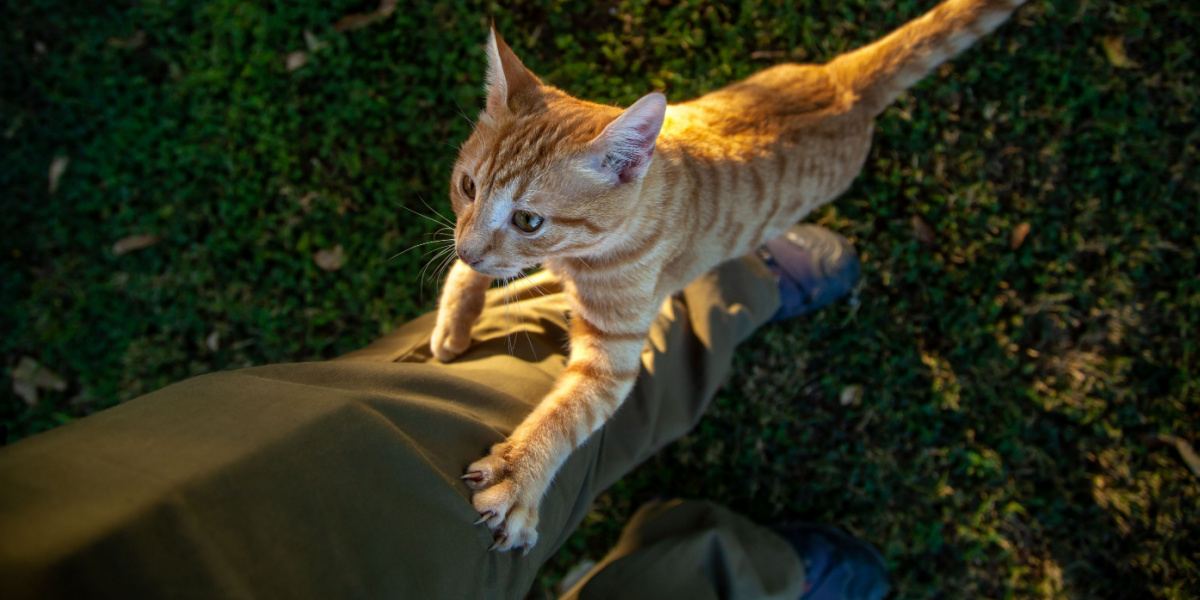
10 Tips To Stop Cats Running Up Your Leg!
Dealing with a cat running up your leg can be a surprising and sometimes painful experience. Here are 10 quick tips to help prevent this behavior:
Redirect Attention: Use toys to distract your cat. Offer a toy or a teaser wand to redirect their energy away from your legs.
Consistent Playtime: Engage your cat in regular play sessions. This helps burn off their energy and reduces their urge to climb on you.
Avoid Encouraging the Behavior: Don’t encourage your cat to play with your hands or feet. This can lead to them seeing your legs as a plaything.
Use a Deterrent: Lightly spray water near your cat when they attempt to climb your leg. This can discourage the behavior without harming them.
Provide Climbing Alternatives: Invest in cat trees or climbing shelves. Cats love to climb, and having an appropriate outlet can prevent them from using you as a tree.
Train with Commands: Teach your cat simple commands like ‘no’ or ‘down’. Use a firm voice but avoid yelling, as it can stress them out.
Wear Thick Clothing: When you anticipate interaction with your cat, wear thick pants to minimize scratches.
Stay Calm and Still: If your cat does start to climb, stay calm and still. Moving quickly can excite them further.
Trim Their Claws: Regularly trimming your cat’s claws can make their climbing less painful, though it won’t stop the behavior.
Seek Professional Help: If the behavior persists, consider consulting a veterinarian or a cat behaviorist. They can offer tailored advice and solutions.
Remember, patience and consistency are key. It’s important to understand that climbing is a natural behavior for cats, and they’re not trying to hurt you intentionally. It’s just their way of playing or seeking attention.

